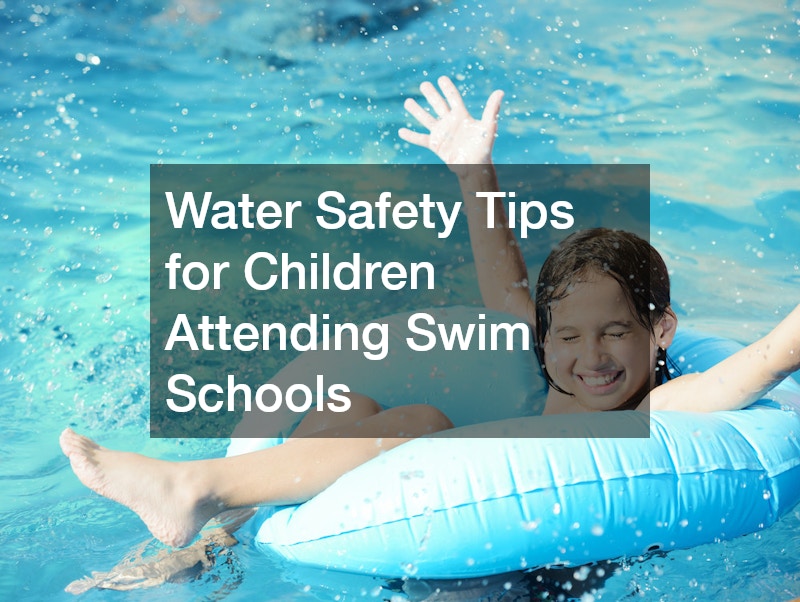
Water activities are a favorite pastime for many families, especially during the warmer months, and swimming offers a wealth of benefits for children. From building strength and coordination to providing a fun and engaging form of exercise, swimming is a skill that can last a lifetime. For parents enrolling their children in swim schools, ensuring their safety is paramount. With the right safety measures in place, children can learn how to swim in an environment that is both fun and secure.
This article will cover essential water safety tips to keep in mind when children attend swim schools.
1. Choose a Reputable Swim School
The first step in ensuring your child’s safety in the water is selecting a reputable swim school. A good swim school should have certified instructors trained in water safety and child CPR. It is important to ask about the qualifications of the instructors and their experience working with children of your child’s age and skill level. Look for swim schools that are accredited by recognized organizations, such as the American Red Cross or the YMCA, as these institutions set high standards for both teaching and safety practices.
2. Supervision Is Key
Even though swim schools typically offer trained instructors and a safe learning environment, the role of parental supervision cannot be overstated. Always keep an eye on your child while they are in or near the water, whether they are swimming in the pool or participating in other water-related activities. Accidents can happen in the blink of an eye, so maintaining constant supervision is essential.
If your child is attending swim lessons with a group, ask the swim school about the instructor-to-student ratio. A smaller ratio means that each child receives more personalized attention, which is especially important for young swimmers. It can also help the instructor respond more quickly to any emergency situations.
3. Teach Basic Water Safety Rules
Before your child begins their swim school lessons, it’s important to teach them basic water safety rules. Children should know to never run around the pool, to always listen to the instructor, and to stay away from pool drains or other potentially dangerous areas. Some basic rules to teach your child include:
- Stay away from the pool edge unless an adult is present.
- No pushing or rough play in the pool.
- Never swim alone or without an adult present.
- Learn to float and practice floating on their back.
- Never dive into shallow water.
The earlier children learn and understand these rules, the more ingrained they become, helping to foster a safety-first mindset.
4. Fit Children with the Right Swim Gear
Proper swim gear is an important aspect of water safety. Ensure your child is wearing well-fitted swimwear and equipment, such as swim diapers for toddlers, swim caps, and goggles. These items can enhance the swimming experience while ensuring that your child is comfortable and safe.
When it comes to flotation devices, the type of device should depend on your child’s swimming ability. For beginners, consider using floatation aids like water wings or kickboards, but never rely solely on flotation devices. These items are not a substitute for the child’s ability to swim or an instructor’s supervision. As children progress in their lessons, it is important to gradually phase out flotation devices to build confidence and independence in the water.
5. Enroll in Age-Appropriate Classes
Swim schools typically offer lessons for a wide range of ages, from infants to teens. It is crucial to enroll your child in classes that are appropriate for their age, size, and skill level. Age-appropriate swim classes are designed to cater to the developmental stage of the child, ensuring that they are taught in a manner that is both safe and effective.
For young children or toddlers, many swim schools offer “parent-and-me” classes, which help introduce babies and toddlers to the water in a safe and controlled manner. These classes focus on acclimating children to the water environment, developing comfort in the water, and teaching fundamental skills like kicking, floating, and blowing bubbles.
Older children or those who are ready to learn more advanced techniques can begin more structured lessons focusing on stroke development, breath control, and water safety. These lessons should still emphasize safety, teaching children how to recognize and respond to dangers in the water, such as how to rescue themselves if they fall into a pool or how to signal for help.
Conclusion
Water safety is an essential part of a child’s swimming education. While swim schools provide the necessary tools and instruction for children to learn how to swim effectively, it’s important for parents to be proactive in promoting water safety both at the school and at home. By choosing a reputable swim school, maintaining supervision, teaching essential water safety rules, and equipping your child with the right skills, you can ensure they have a fun, safe, and enjoyable experience in the water.
.



